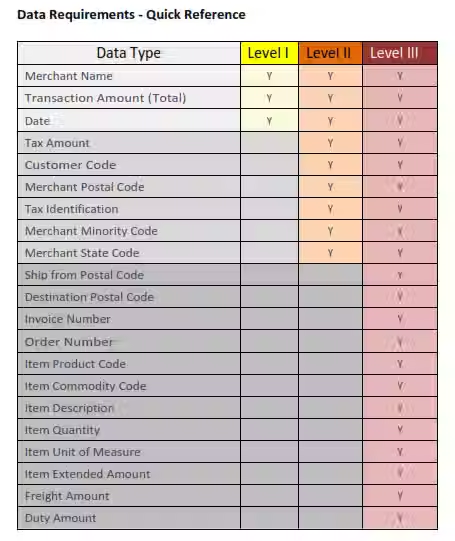Interchange Rates Matter to Your Business
- merchantstatement
- Jun 19, 2023
- 4 min read
Updated: Jul 10
MERCHANT ACCOUNT SECRETS REVEALED – ONLINE SERIES – PART 2
At the outset, we spoke about the discount rate that most businesses focus on when choosing a merchant account. How do credit card companies arrive at that all too familiar Discount Rate when they provide you with a merchant rate proposal? First let’s make one thing clear, there is a difference between what you pay and what your merchant account provider pays to accept a credit card transaction. You may have heard the term “Interchange”. Think of interchange rates as the wholesale cost and think of the discount rate that you pay as the retail price that is “up sold” by the acquiring bank in order for a merchant account provider to make money. With so many players involved in this industry, it is easy to get confused. Look at a picture below and you will see the current four-party payment system showing how a transaction is cleared and settled through the bankcard system.
How a credit card transaction is assessed on the current credit card payments system.

Let’s suppose that a merchant accepts payment for $100 (1). The charge is cleared by the banks (2). When the merchant gets their funds deposited, they only receive $97.50 (5). Why? First the Acquiring bank must charge the merchant $2.00 to cover the Interchange and Assessment fees that the Issuing bank charges them (4). The acquiring bank also desires to make money, so they are charging the merchant processing fees in the amount of $.50 for that transaction (3). So just how do interchange fees and Dues and Assessments affect your merchant account pricing? Consider this example: Suppose your discount rate and transaction fee on a swiped transaction is 1.69% and $.20. The interchange fee (wholesale cost) for a Visa transaction of this type is 1.54% and $.10. Furthermore, the Dues and Assessments are an additional .0925% (Visa) and $.0110 (MasterCard). This means that the acquiring bank has only charged you an additional .0575% and $.08 for that transaction (1.69-1.54-.0925 = .0575%; $.20-.10-.0195 = $.08). This small portion of the fees charged can be referred to as processing fees. It is easy to see that interchange fees make up the largest portion of the fees you incur for accepting credit cards. If you would like to see the actual Visa and MasterCard interchange grids, you can find them on the Visa and MasterCard websites if you haven’t done so.
https://usa.visa.com/content/dam/VCOM/download/merchants/visa-usa-interchange-reimbursement-fees.pdf
WHAT ARE INTERCHANGE RATES?
Interchange is a term used to describe the fees that an acquiring bank (merchant account bank) pays to the issuing bank (cardholder bank) when merchants accept credit card payment. Interchange serves to compensate the issuing bank for a portion of the risk and cost incurred to maintain cardholder accounts. These costs include finance costs for the interest free period between the time a consumer makes a purchase and pays their bill, credit losses, fraud protection and processing costs. It is the card associations (Visa, MasterCard) that determine the interchange fees. The card associations issue revised rates biannually (April and October) called Interchange Reimbursement Fees. Typically the interchange rate includes a percentage as well as a per item fee for each transaction (wholesale cost). When a merchant accepts payment via a credit card, the acquiring bank then pays the merchant the amount of the transaction minus both the interchange fees and additional fees from the acquiring bank and ISO. It is important to keep in mind that 70-90% of the fees assessed on a merchant account are purely interchange fees that are paid directly to the issuing bank not your merchant account provider.
You can also try searching the internet or the term “Interchange Reimbursement Fees”. Once you have found those documents, your first thought may likely be, “What am I looking at? How confusing!” This is because there are literally 100’s of transaction categories within the Visa and MasterCard system. Typically, these are credit card type dependent, transaction dependent, or business type dependent. For example, Visa’s CPS retail is used to designate a swiped credit card. On the other hand MasterCard’s World Merit 3 refers to a special Rewards card that is swiped.
All these different categories actually developed over time as the banks developed more card types and programs to attract more customers. Also, each fee category is designed to reflect the level of risk associated with a certain transaction. Another reason this was done was to develop categories that reflect the processing behavior of certain industries. There are businesses that have specific needs such as hotels, restaurants, C-stores, and even utility companies. Interchange rates were customized to benefit these businesses as well. For example, new interchange levels were created to help support Rewards Programs that continue to be refined and promoted to cardholders. These types of cards cost the merchant more to accept since the issuing banks are offering incentives to their customers to use this special card.
And guess who gets left with the bill? The merchants! Sneaky? I think so. So you now can begin to understand why it is necessary to be a little familiar with interchange if you want to accept credit cards at your business. In fact, the more you know, the better pricing you will get. We will discuss various pricing models based on interchange in greater detail later in this book. Let’s continue to examine what to look for to get the cheapest merchant account...TO BE CONTINUED IN PART 3




Comments